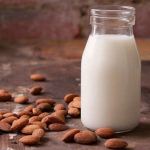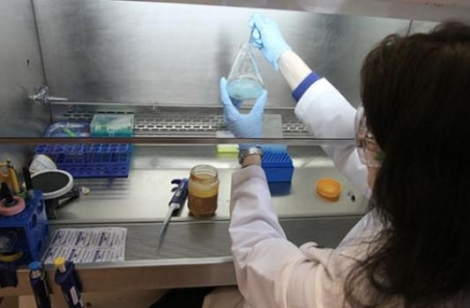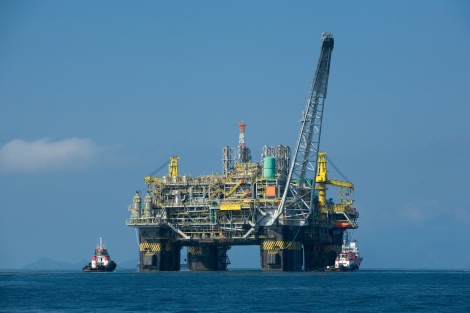A town on fire


My brain works in mysterious ways, but did you know there’s a town that’s burning and will probably be burning for another (roughly) few hundred years? Not a town exactly, but it’s yet another case of truth being stranger than fiction. If you’re not familiar with the story, or just like learning more when you can, let me introduce you to the town of Centralia.
(more…)Surviving catastrophe: A how to guide


Well what a crazy time to be alive, a time where everything is trying to kill us. Okay I acknowledge that nature is one ruthless force, but a lot of what has happened in the past few days has been almost completely due to human greed. Between the global warming causing this “once in a lifetime” storm — that is certainly not once in a lifetime — and power companies more concerned about profit than human lives, it’s been a trial. People, real people like you or I, but with far more money, are trying to kill us. Don’t give them the satisfaction.
(more…)First demonstration of brain-inspired device to power artificial systems

New research has demonstrated that a nanoscale device, called a memristor, could be used to power artificial systems that can mimic the human brain. Artificial neural networks (ANNs) exhibit learning abilities and can perform tasks which are difficult for conventional computing systems, such as pattern recognition, on-line learning and classification.
Sugar gives bees a happy buzz

An unexpected sugary snack can give bees a little buzz and appears to lift their mood, even making them optimistic, according to research that suggests pollinators have feelings, too. Since emotions are subjective and difficult to measure—particularly in animals—researchers looked at how bees’ behavior changed after they were given a sip of sucrose solution.
Potentially harmful chemicals widespread in household dust

Household dust exposes people to a wide range of toxic chemicals from everyday products, according to a new study. A multi-institutional team conducted a first-of-a-kind meta-analysis, compiling data from dust samples collected throughout the United States to identify the top ten toxic chemicals commonly found in dust.
Largest-ever study reveals environmental impact of genetically modified crops

According to new research, widespread adoption of genetically modified crops has decreased the use of insecticides, but increased the use of weed-killing herbicides as weeds become more resistant. This is the largest study of genetically modified crops and pesticide use to date. The team of economists studied annual data from more than 5,000 soybean and 5,000 maize farmers in the U.S. from 1998 to 2011, far exceeding previous studies that have been limited to one or two years of data.
Food waste could store solar and wind energy, or there’s the obvious…

Saving up excess solar and wind energy for times when the sun is down or the air is still requires a storage device. Batteries get the most attention as a promising solution although pumped hydroelectric storage is currently used most often. Now researchers are advancing another potential approach using sugar alcohols—an abundant waste product of the food industry—mixed with carbon nanotubes.
Antimicrobial chemicals found with antibiotic-resistance genes in indoor dust

Researchers have found links between the levels of antimicrobial chemicals and antibiotic-resistance genes in the dust of an aging building used for athletics and academics. One of the antimicrobials seen in the study is triclosan, a commonly used antibacterial ingredient in many personal care products.
Drugs in the water? Don’t blame the students

With nearly sixty percent of American adults now taking prescription medications–from antidepressants to cholesterol treatments–there is growing concern about how many drugs are flowing through wastewater treatment facilities and into rivers and lakes. Research confirms that pharmaceutical pollution can cause damage to fish and other ecological problems–and may pose risks to human health too.
Cloth masks offer poor protection against air pollution

Results of a new study by environmental health scientists suggest that inexpensive cloth masks worn by people who hope to reduce their exposure to air pollution vary widely in effectiveness and could be giving users a false sense of security, especially in highly polluted areas.
Pesticides used to help bees may actually harm them

Pesticides beekeepers are using to improve honeybee health may actually be harming the bees by damaging the bacteria communities in their guts. The discovery is a concern because alterations can affect the gut’s ability to metabolize sugars and peptides, processes that are vital for honeybee health.
Air pollution affects young people’s psychiatric health
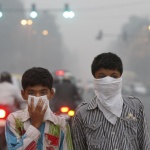
Smog has been a part of modern life since the industrial revolution, unfortunately all that pollution isn’t just hurting the environment — but come on, you saw this coming… right? New research from Sweden indicates that dispensed medication for psychiatric diagnosis can be related to air pollution concentrations. More and more studies show that the brain and human cognitive development are affected by pollution.
Bacteria in branches naturally fertilize trees
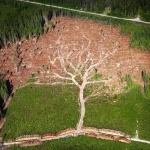
The bacteria in and on our bodies have been shown to be vital for human health, influencing nutrition, obesity and protection from diseases. But science has only recently delved into the importance of the microbiome of plants. Since plants can’t move, they are especially reliant on partnerships with microbes to help them get nutrients.
Testing the evolution of resistance by experiment

When the first antibiotics became available 70 years ago, they were often described as miracles of human ingenuity, rather like plastics or bright permanent dyes, which were discovered at roughly the same time. Packaged in vials or pills, they seemed like our inventions rather a chance gift of evolution and one that evolution might also rescind.
So, our immune cells don’t see some carbon nano invaders…


Macrophages gonna macrophage.
Scientists at the University of Michigan have found evidence that some carbon nanomaterials can enter into immune cell membranes, seemingly going undetected by the cell’s built-in mechanisms for engulfing and disposing of foreign material, and then escape through some unidentified pathway.
Man-made underwater sound may have wider ecosystem effects
Underwater sound linked to human activity could alter the behaviour of seabed creatures that play a vital role in marine ecosystems, according to new research from the University of Southampton. The study found that exposure to sounds that resemble shipping traffic and offshore construction activities results in behavioural responses in certain invertebrate species that live in the marine sediment.
‘Hydricity’ concept uses solar energy to produce power round-the-clock… really?

Researchers are proposing a new “hydricity” concept aimed at creating a sustainable economy by not only generating electricity with solar energy but also producing and storing hydrogen from superheated water for round-the-clock power production.
Researchers create technology to produce lighter, long-lasting batteries from silicon
Substantially smaller and longer-lasting batteries for everything from portable electronic devices to electric cars could become a reality thanks to an innovative technology developed by University of Waterloo researchers. Zhongwei Chen, a chemical engineering professor at Waterloo, and a team of graduate students have created a low-cost battery using silicon that boosts the performance and life of lithium-ion batteries.
You too can learn to farm on Mars!
Scientists at Washington State University and the University of Idaho are helping students figure out how to farm on Mars, much like astronaut Mark Watney, played by Matt Damon, attempts in the critically acclaimed movie “The Martian.” Washington State University physicist Michael Allen and University of Idaho food scientist Helen Joyner teamed up to explore the challenge. Their five-page study guide was published the day the movie premiered earlier this month.
How plants turn into zombies
It begins as a fairy tale which later turns into a horror story: Lusciously flowering plants, surrounded by a large number of insects. Usually, both sides profit from the encounter: Feasting on the plant juice and pollen, the insects pollinate the flowers and thus secure the survival of the plants. However, sometimes the insects – in this case a certain species of leafhoppers – can bring disaster to the plants, which they are not able to overcome.
Mexico City’s air pollution has detrimental impact on Alzheimer’s disease gene
A new study by researchers heightens concerns over the detrimental impact of air pollution on hippocampal metabolites as early markers of neurodegeneration in young urbanites carrying an allele 4 of the apolipoprotein E gene (APOE). This is associated with the risk for Alzheimer disease (AD) and a susceptibility marker for poor outcome in traumatic brain injury (TBI) recovery.
Artificial ‘plants’ could fuel the future

This schematic image of Chang’s artificial photosynthesis systems shows its four general components: (1) harvesting solar energy, (2) generating reducing equivalents, (3) reducing CO2 to biosynthetic intermediates and (4) producing value-added chemicals.
Image credit goes to: Berkeley Lab
Imagine creating artificial plants that make gasoline and natural gas using only sunlight. And imagine using those fuels to heat our homes or run our cars without adding any greenhouse gases to the atmosphere. By combining nanoscience and biology, researchers led by scientists at University of California, Berkeley, have taken a big step in that direction.
Some vaccines support evolution of more-virulent viruses

This image shows chickens in agricultural production. Image credit goes to: Andrew Read, Penn State University
Scientific experiments with the herpes virus such as the one that causes Marek’s disease in poultry have confirmed, for the first time, the highly controversial theory that some vaccines could allow more-virulent versions of a virus to survive, putting unvaccinated individuals at greater risk of severe illness. The research has important implications for food-chain security and food-chain economics, as well as for other diseases that affect humans and agricultural animals.
Natural wilderness areas need buffer zones to protect from human development
Despite heavy development, the U.S. still has millions of acres of pristine wild lands. Coveted for their beauty, these wilderness areas draw innumerable outdoor enthusiasts eager for a taste of primitive nature. But University of Georgia researchers say these federally protected nature areas have a problem: Their boundaries have become prime real estate.
Air pollution is causing your baby problems, but breastfeeding can help
Aitana Lertxundi has conducted her research work within the framework of the INma (Childhood and Environment) programme led by Jesús Ibarluzea of the Department of Health of the Government of the Basque Autonomous Community (region). The aim is to assess how exposure to environmental pollution during pregnancy affects health and also to examine the role of diet in physical and neurobehavioural development in infancy. The study focusses on the repercussions on motor and mental development during the first years of life caused by exposure to the PM2.5 and NO2 atmospheric pollutants.
Nanoparticles in products can significantly alter normal gut microbiome
Nanoparticles, it’s the new buzzword that cosmetics and even consumer “anti-aging” products use to promote their brand. As the word suggests, nanoparticles are small and it shouldn’t be too surprising that these nanoparticles are causing problems in nature because of their prevalence. In that light, it might not be a surprise that there could also be some serious health issues associated with these nanoparticles.
Fracked, shale-drilling additives in drinking-water taps near leak
Shale oil has helped the US see lower gas prices and even an opportunity to start exporting. However, it isn’t as great as it might sound, hydraulic fracturing — also known as fracking — has been scrutinized by environmentalists since it’s inception. As it turns out, for good reason, substances commonly used for drilling or extracting Marcellus shale gas foamed from the drinking water taps of three Pennsylvania homes near a reported well-pad leak, according to new analysis from a team of scientists.
Pesticides alter bees’ brains, making them unable to live and reproduce adequately
A new report suggests that a particular class of pesticides called “neonicotinoids” wreaks havoc on the bee populations, ultimately putting some crops that rely on pollination in jeopardy. Specifically, these pesticides kill bee brain cells, rendering them unable to learn, gather food and reproduce. The report, however, also suggests that the effects of these pesticides on bee colonies may be reversible by decreasing or eliminating the use of these pesticides on plants pollinated by bees and increasing the availability of “bee-friendly” plants available to the insects.
An apple a day may keep the children away: Pesticides and sperm count
Ever hear that old saying an apple a day keeps the Doctor away? Well it might have the right idea, just the wrong person. New research investigating the relationship between eating fruit and vegetables containing pesticide residues and the quality of men’s semen has shown a link with lower sperm counts and percentages of normally-formed sperm. So for people wanting children it may be time to rethink that produce.
Biofuel, good for the environment if you’re eating less
When the government first changed policy to require ethanol in gasoline, we were told it would reduce our carbon footprint. Then food prices rose significantly and corn in particular saw the largest price rise. This was because corn is a staple in production of almost any other food from eggs to beef, but the policy made environmental sense. Well it made sense, until you found out that the new policy also took into account people eating less.
Move over oil, new pretreatment could cut biofuel costs by 30 percent or more
Alternative fuels have a few large problems making them horrible options over oil (which is already a horrible choice). However, researchers may have finally eliminated one of those problems, cost. The team has invented a novel pretreatment technology that could cut the cost of biofuels production by about 30 percent or more by dramatically reducing the amount of enzymes needed to breakdown the raw materials that form biofuels.
Study shows rise in mass die-offs
You really don’t hear much about mass die-offs from mainstream news outlets; this might make you think they don’t happen that often. However, an analysis of 727 mass die-offs of nearly 2,500 animal species from the past 70 years has found that such events are increasing among birds, fish, and marine invertebrates. At the same time, the number of individuals killed appears to be decreasing for reptiles and amphibians, and is unchanged for mammals.
Finding the real cost of climate change
How much does global warming really cost the world? Determining the Social Cost of Carbon helps put a actual dollar value on the climate damages per ton of CO2 released, and is used by — among others — policymakers to help determine the costs and benefits of climate policies. Remember, even on a global scale, the bottom line will always be profit. But now a group of economists and lawyers urge several improvements to the government’s Social Cost of Carbon figure that would impose a regular, transparent and peer-reviewed process to ensure the figure is reliable and well-supported by the latest facts.
Our increased carbon dioxide output causes global warming and now we have proof
Global warming, it’s a bigger deal than some people seem to realize. For years science has pointed to the increased carbon dioxide output as the main reason for man-made global warming. However, there has been no evidence to directly link CO2 output to global warming, well until now. Research has identified, for the first time, how global warming is related to the amount of carbon emitted.
Even more bad global warming news
While everyone (but seemingly the media) is on basically the same page with the fact that global warming is a human caused problem — and one we need to fix the effects of this change are still coming to light. Human-induced changes to Earth’s carbon cycle – for example, rising atmospheric carbon dioxide and ocean acidification – have been observed for decades. However, a new study showed human activities, in particular industrial and agricultural processes, have also had significant impacts on the upper ocean nitrogen cycle.
Blu-ray solar power
So here’s something you don’t see everyday. Blu-ray disks, you know the stuff we use for video games or DVDs also improve the performance of solar cells—suggesting a second use for unwanted discs—according to new research from Northwestern University. As surprising as this was, there is even better news, we know why they improve performance.
Some Plants can regenerate by DNA duplication

Some cultivars of the plants Arabidopsis thaliana (used in the study) and Ipomopsis aggregata (pictured here) can duplicate their genomes multiple times without undergoing cell division. Photo credit goes to: L. Brian Stauffer
When munched by grazing animals (or mauled by scientists in the lab), some herbaceous plants overcompensate – producing more plant matter and becoming more fertile than they otherwise would. Scientists say they now know how these plants accomplish this feat of regeneration.
A new way to look at Global Warming
Global warming, nothing new with that and it’s here to stay for now. But while computer models churn out bleak forecasts for the planet’s future, we also have a more conceptual understanding of what is happening as humans pump carbon dioxide into the air. Unfortunately the traditional conceptual understanding of carbon dioxide wrapping the planet in a sort of blanket that traps more heat is not quite right.
A Big Break for Bio-Gasoline
While the world waits for a better battery (and a energy grid system that doesn’t require constant power making), scientists are hard at work trying to teach old fuels a new trick. Thankfully an international team of bioengineers has boosted the ability of bacteria to produce isopentenol, a compound with desirable gasoline properties. The finding, if it is not obvious, is a significant step toward developing a bacterial strain that can yield industrial quantities of renewable bio-gasoline.
Boosting Crop Yields via Genetics

CSHL scientists have identified a set of genetic variants that can dramatically increase tomato production. On the far left is the average yield from a plant that grows standard canning tomatoes. The next three piles were produced by plants with mutations found in the toolkit. The combination of genetic mutations on the far right produces twice as many tomatoes as the standard variety.
Photo credit goes to: Zachary Lippman/ Cold Spring Harbor Laboratory
Genetic engineering techniques offers many different promises, some of which will obviously come sooner than others. One of those promises was a possible end to famine, while most famine in the world today is in developing countries, that could spread as population increases. To that end scientists have announced a new way to dramatically increase crop yields by improving upon Mother Nature’s offerings. The team has discovered a set of gene variations that can boost fruit production in the tomato plant by as much as 100%.
The Oceans Link to Climate Change

An estimated 35,000 walruses are resting on land because the sea ice has melted
Photo credit goes to: Corey Accardo NOAA/NMFS/AFSC/ANML.
Hold on to your hats folks, we can all agree that most of the concerns about climate change have focused on the amount of greenhouse gases that have been released into the atmosphere. But in a new study a group of researchers have found that circulation of the ocean plays an equally important role in regulating the earth’s climate. Keep in mind this doesn’t mean global warming isn’t a man-made problem, please.
A look at Air Pollution and Your Body
We have all probably seen stories from China on the horrid air pollution there. Accompanying those reports of course are the statistics for air pollution that deaths have caused. For the record, the World Health Organization estimated that ambient air pollution caused 3.7 million premature deaths (worldwide) in 2012 alone – yet what exactly happens to your body when it encounters pollutants?
Solar Panel Hybrid is Cheap and Super Efficient
Solar cells are inefficient, it’s a sad fact. With todays technology they boast about a 10-15% efficiency, compare that to todays gas engine at roughly 20-25% and you can see it’s not quite up to par. Well that could all change very soon thanks to a new method for transferring energy from organic to inorganic semiconductors. This could boost the efficiency of widely used inorganic solar cells to as close as 100% efficiency as they can get.
Biofilms: Using Bacteria for new Designer Nanomaterials

For most people biofilms conjure up images of slippery stones in a streambed and dirty drains. While there are plenty of “bad” biofilms around – they are even the same stuff that causes pesky dental plaque and a host of other more serious medical problems – a team of researchers sees biofilms as a robust new platform for designer nanomaterials that could clean up polluted rivers, manufacture pharmaceutical products, fabricate new textiles, and more.
Swamp Thing and Plant Communication
Maybe I’m dating myself here, but ever see the swamp thing movie, television show, or even the comic? Call me picky, after all we are talking about a human/plant hybrid, but he never needed to talk. I know, some of you are probably rolling your eyes at me given it’s a comic, movie or tv show [depending on your level of geek], but come on, this is science!
Pregnancy and Antibacterial Soap a Potentially Dangerous Combination
My wife likes to sanitize everything with bleach. I don’t really approve, but I bite my tongue because it makes her feel better. Germs are everywhere and honestly there is no way to escape them because frankly…. they are you! In hospitals it makes sense to try to fight it, to be as sanitary as possible for the health of the patients. At home it makes a little less sense, there is no need, but that hasn’t stopped the rise of antibacterial soaps. In fact, it’s hard to find a soap that isn’t antibacterial these days, which has brought with it an interesting dilemma, along with potential health issues.
More Horror from Deepwater Horizon Oil Spill
Deepwater Horizon, it was a technological feat to get oil that deep in the water. Then the spill occurred, when it happened I honestly think more people were in shock than angry. We had never dealt with an oil spill like that before, much less one in the heart of such a huge fishing community. Louisiana business suffered and probably continues to suffer from the spill and the tons of oil that were spilled. Frankly the people in charge freaked out and just did everything they could to clean it up as quickly as possible. That unfortunately included the use of lots and lots of dispersants [chemicals to break up oil so nature can degrade and break down the oil more quickly].
Saving the Rainforest and the Consequences
The road to hell is paved with good intentions. This seems even more true when a new study came out that shows, when it comes to fixing deforestation and forest degradation, even good intentions can lead to bad outcomes. I hate to sound like a broken record when it comes to this whole “climate change” stuff, but it really needs to be addressed sometime…



